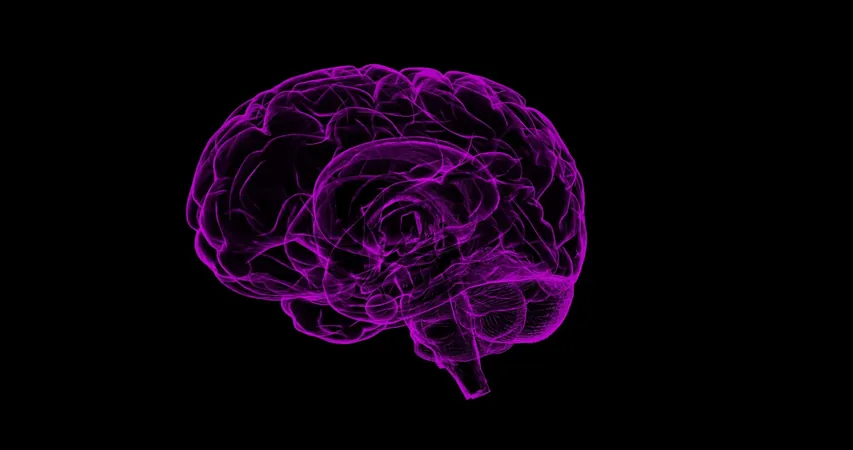
Unveiling the Hidden Changes of Huntington's Disease: A Beacon of Hope for Early Prevention Trials
2025-01-17
Author: Yu
Groundbreaking Research on Huntington's Disease
A groundbreaking study led by researchers at University College London (UCL) has identified subtle yet significant brain changes associated with Huntington's disease that occur up to 20 years before the onset of clinical symptoms. This research, published in the prestigious journal Nature Medicine, opens a promising new chapter in the fight against this devastating neurodegenerative disease.
Collaboration Across Institutions
Working in collaboration with experts from the Universities of Glasgow, Gothenburg, Iowa, and Cambridge, the UCL team examined groups of individuals carrying the Huntington's disease gene and uncovered critical insights about the disease's progression. Although participants showed no decline in cognitive and motor abilities during the study, advanced imaging and analyses of blood and spinal fluid revealed early indications of neurodegeneration.
Understanding Huntington's Disease
Huntington's disease is known to affect movement, thinking, and behavior, typically manifesting symptoms in mid-adulthood for those with an affected parent, carrying a 50% chance of inheriting the harmful gene mutation. The disease stems from a repetitive expansion of DNA sequences in the huntingtin gene, leading to somatic CAG repeat expansion, which drives the slow but sure degeneration of brain cells.
Study Details and Key Findings
In this study, 57 individuals with the Huntington's gene expansion—averaging 23.2 years from a predicted clinical diagnosis—were compared to 46 matched control participants over five years. Comprehensive assessments of their physical and cognitive functions, along with brain scans, revealed that while their overall clinical functions remained stable, subtle changes indicated early neurodegeneration well before any visible symptoms appeared.
Biomarkers Indicating Early Neurodegeneration
The researchers discovered notable biomarkers in the spinal fluid of participants with Huntington's disease, including elevated neurofilament light chain (NfL), which signifies neuronal injury, and decreased proenkephalin (PENK), suggesting deteriorating neuron health. This compelling evidence underscores that important biological changes occur long before the clinical onset of the disease, suggesting a critical window for potential therapeutic interventions.
Implications for Future Clinical Trials
Professor Sarah Tabrizi, lead author and researcher at UCL, emphasized the importance of these findings for future clinical trials aimed at preventing Huntington's disease. She stated that the participants' commitment and cooperation contribute significantly to the hope that preventative treatments may soon be on the horizon.
Broader Impact on Neurodegenerative Disorders
Moreover, the study has implications beyond Huntington's disease, pointing towards similar neural change processes in other neurodegenerative disorders, such as Alzheimer’s disease. Understanding these early markers is essential for crafting effective clinical trials that can evaluate whether emerging treatments have a genuine impact.
Connection Between Blood Markers and Brain Changes
The research presents a vital connection between blood markers indicative of somatic CAG expansion and early brain alterations, suggesting actionable targets for future therapies. As treatments designed to suppress somatic CAG repeat expansion emerge, this innovative study could represent a pivotal moment towards developing preventative strategies for Huntington's disease, illuminating a path fraught with hope for patients and families affected by this genetic condition.
Looking Ahead
As we stand on the brink of physiological understanding, the spotlight on neurodegenerative diseases continues to grow ever brighter. With such significant advances in research, the future of Huntington's disease prevention could transform the lives of many, heralding a new era of possible postponement or even prevention of symptoms altogether. Stay tuned as the scientific community inches closer toward breakthroughs that could change the narrative of these heart-wrenching diseases forever!



 Brasil (PT)
Brasil (PT)
 Canada (EN)
Canada (EN)
 Chile (ES)
Chile (ES)
 Česko (CS)
Česko (CS)
 대한민국 (KO)
대한민국 (KO)
 España (ES)
España (ES)
 France (FR)
France (FR)
 Hong Kong (EN)
Hong Kong (EN)
 Italia (IT)
Italia (IT)
 日本 (JA)
日本 (JA)
 Magyarország (HU)
Magyarország (HU)
 Norge (NO)
Norge (NO)
 Polska (PL)
Polska (PL)
 Schweiz (DE)
Schweiz (DE)
 Singapore (EN)
Singapore (EN)
 Sverige (SV)
Sverige (SV)
 Suomi (FI)
Suomi (FI)
 Türkiye (TR)
Türkiye (TR)